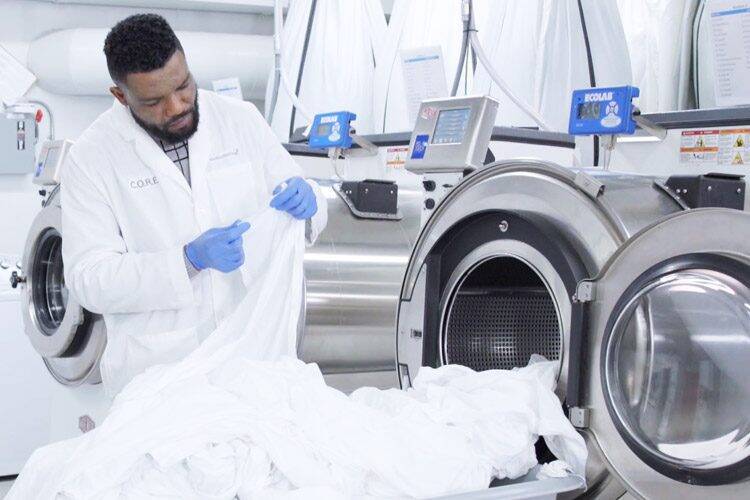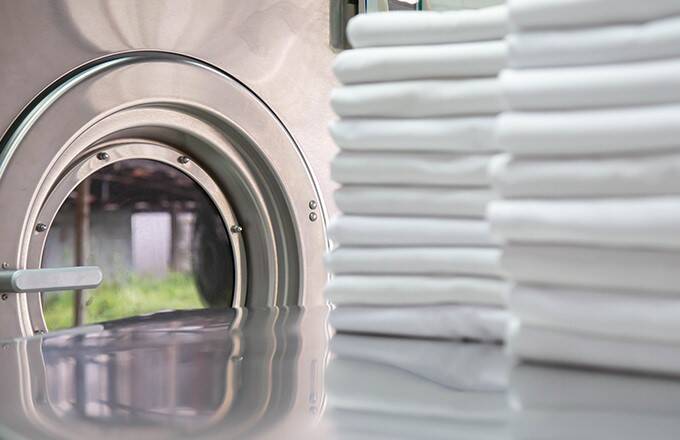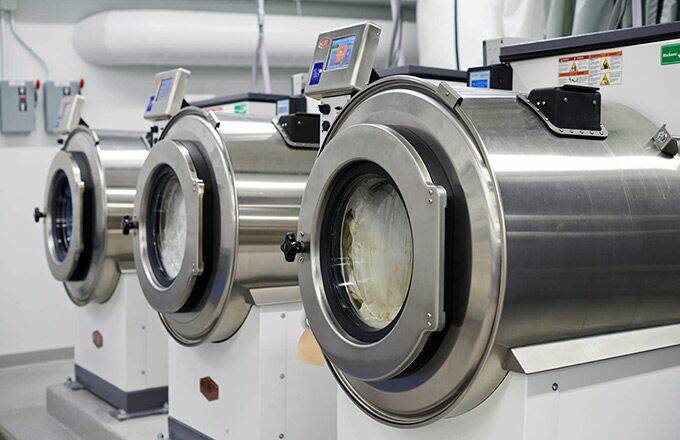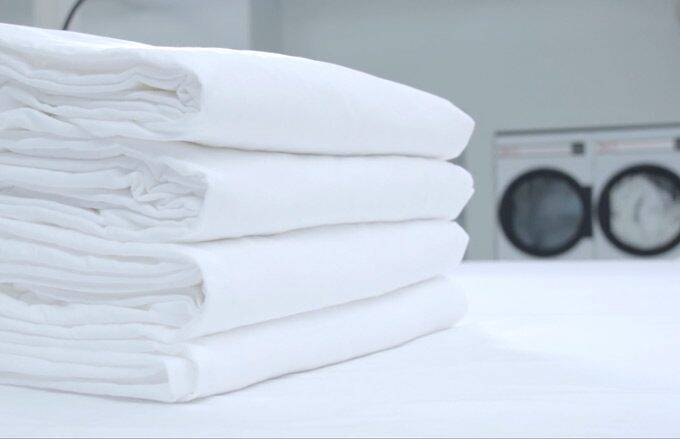September 4, 2019
Laundry Best Practices

The first step to extending linen product life and minimizing waste is to start with a higher quality product. But even then, products can–and will–degrade or become damaged over time. Although you can’t prevent all linen lost to tearing, staining, or mysteriously disappearing, we have some tips to help minimize laundry related product loss.
Tip 1: How to Avoid Tearing
Tearing can occur in linen chutes, storage carts, shelving, bedframes, washers, dryers, and ironers. As products age, they become more susceptible to tearing. Maintaining tensile strength of sheeting and terry throughout their life is key.
But starting with stronger products made with our Centium Core Technology® will offer superior strength wash after wash, month after month.
Tip 2: Keep an Eye on Your Hem Stitching
Some products have what’s known as a “sew off.” The sew off helps prevent the hem stitching from unraveling, so it’s important it is not removed or clipped off. After a few wash and dry cycles, these sew offs get smaller, and that’s part of the process that secures the hem.
Tip 3: Manage Your Staining
Stains are inevitable, but they should be managed. Staining or rewash rates should average around 3% and most stained items should be processed through a stain reclaim process. Good recovery rates should be 80% or higher. Spot stains early and separate linens accordingly so stains don’t spread in the wash.
Tip 4: Avoid Aggressive Washing
An overly aggressive wash cycle can accelerate wear on products and cause them to be removed from your inventory prematurely. Ensure that your wash process, chemistry, loading parameters, and finishing procedures are appropriate for the products being washed and are managed correctly. Work with your chemical provider if necessary to ensure that your programs and wash formula are optimized for your different load types.
Tip 5: Maintain Par Levels
A par level refers to the number of linen sets has on hand per room. We recommend a minimum of 3-par. This allows the cotton to rest after laundering and regain some lost moisture, as cotton holds 7-8% of its “dry” weight in water. Water acts as a lubricating agent so it is recommended that after drying, sheets and towels be given ample time to re-hydrate before use. This could take up to 24 hours, depending on the environment. Using items with low moisture content can accelerate their wear.
Tip 6: Provide Alternatives to Avoid Product Misuse
Product misuse can damage textiles and render them unusable. Although you can’t prevent all product misuse, here are some tips to help deal with common misuse examples, such as using wash towels for make-up removal or for cleaning shoes. Providing disposable make-up removers in the rooms and shoe rags are ways to help deter this activity.
In summary, don’t forget to:
- Start with higher quality products to greatly increase overall product life.
- Maintain a process to monitor staining and reclaim rates.
- Ensure that your wash chemistry isn’t too aggressive for the products you are processing.
- Laundered products need to rest before use for optimal performance.
- Provide guests with specific products for make-up removal and shoe polish.
- Contact our laundry experts
Are you having any issues with product lifespan? If you have specific questions or concerns regarding laundry process or best practices, please contact your approved chemical supplier or feel free to reach out to our laundry experts at Standard Textile.
Related Content

Laundering Best Practices: 8 Part Series Recap for Perfect Laundering
Laundry care can affect the perception of your hotel and your bottom line. This can make a big impact on guest satisfaction and the rate at which a hotel gains repeat customers, so it’s important to take a look at your laundry practices to ensure you’re consistently delivering the best results.

Common Laundry Mistakes that Can Ruin Hotel Linens
Let’s explore important laundry DON’Ts from our laundry experts that will keep your linens in tip top shape.

VIDEO: 5 Tips to Help Your Hotel Laundry Reduce Wrinkles
Proper laundry procedures can help prevent wrinkles, as well as extend product life. But there are ways to minimize wrinkles with just a few simple steps.